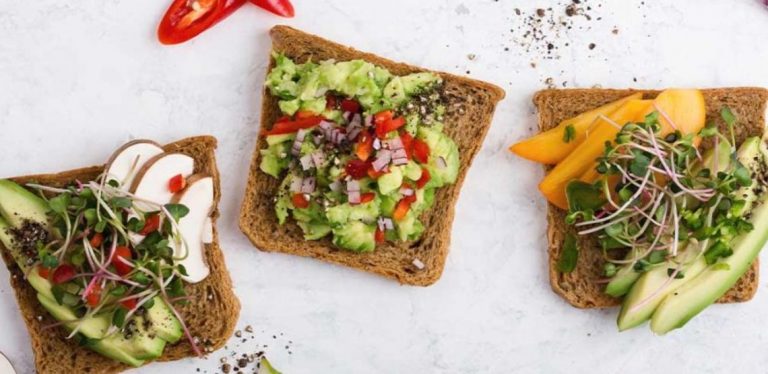What is the DASH Diet?
What is the DASH diet? The DASH diet was originally developed to reduce high blood pressure through healthy eating. This balanced and flexible low-fat eating plan has since become one of the most popular diets in the U.S., as it has many other health benefits as well.
In the 2021 U.S. News and World Report, the DASH diet was ranked, after the Mediterranean diet, as the second-best diet overall. It tied with the Mediterranean diet as the best for healthy eating and the best heart-healthy diet.
This article looks at the DASH diet and why it is a good choice for seniors. We also provide a brief overview of the diet and a few tips to help you follow this eating plan.
About the DASH Diet
We mostly associate the word diet with weight loss, but this is not the purpose of the Dash diet, which stands for Dietary Approaches to Stop Hypertension. It was developed more than 20 years ago with the support of the National Heart, Lung, and Blood Institute (NHLBI).
Surveys in the U.S. and Europe have found that 53% to 72% of elderly people have high blood pressure. Hypertension is a risk factor for many conditions that commonly affect seniors. This includes heart disease, strokes, kidney failure, and loss of vision.
Not only is the DASH diet effective in preventing or reducing high blood pressure, but it also supports overall health. This makes it an excellent approach to healthy eating for seniors.
This eating plan is a low-fat diet, as opposed to the high-fat, low-carbohydrate diets that have become popular recently. This diet emphasizes:
- Plenty of fruits and vegetables.
- Whole grains.
- Seeds, nuts, and legumes.
- Low-fat dairy and meat products.
Furthermore, the DASH diet encourages reduced sugar, salt, and red meat consumption.
Pros and Cons of the DASH Diet
Health Benefits
Studies have confirmed that the DASH diet leads to a drop in blood pressure, both in people with high blood pressure and those who are healthy. The top number of blood pressure readings — the systolic pressure — could drop by as much as 8 to 14 points.
Aside from reducing blood pressure, the DASH diet has other potential health benefits:
- Lowers LDL or “bad” cholesterol levels.
- Improves blood sugar control.
- Aids in weight loss.
- Reduces cancer risk.
Furthermore, a recent study discovered that this diet also reduces damage to the heart muscle, which is often the underlying cause of heart disease.
The DASH diet recommends reduced salt intake. However, sodium is an important mineral in the body. Evidence currently shows that severe restrictions on salt intake, as in the low-sodium version of the diet, could have adverse effects on one’s health.
While weight loss is not the aim of the DASH diet, many lose weight naturally once they start following a healthy eating plan. This is because people generally consume fewer calories when they reduce sugar and fat intake.
Practical Considerations
The DASH diet is a balanced diet, which means that it is safe to follow long-term. What also makes it more acceptable, and less likely to become boring, is that it does not exclude entire food groups. However, you might find it difficult at first to give up foods that are high in fat, sugar, and salt.
All the foods recommended on the DASH eating plan are readily available at your grocery store. A downside for some is having to keep track of the daily servings in each food group. But once your new eating pattern has become established, this task will most likely become unnecessary.
The DASH diet could be a bit more expensive than your current diet. The reason is that you will be eating more fruits and vegetables, which are generally pricier than the popular processed, sugary, and fatty foods.
The DASH Diet: What to Eat
The DASH diet does not give you lists of specific foods to include or exclude. Instead, it recommends the number of servings per day of specific food groups. These are designed to provide the right quantities of nutrients to control blood pressure. Servings can be adjusted if you need to restrict calories to lose weight.
The food groups and servings are as follows:
Whole Grains – 2 to 3 Servings per Day
Whole grains provide energy and fiber, and they are low in fat. They include:
- Whole wheat bread.
- Cereals.
- Pasta.
- Brown rice.
- Maize.
- Bulgur.
- Quinoa.
- Oatmeal.
Examples of servings are one slice of bread or 1/2 cup of cooked pasta, rice, or cereal.
Related Search Topics (Ads)
Vegetables — 4 to 5 Servings per Day
Vegetables provide heart-healthy potassium, magnesium, and fiber. They also offer vitamins, minerals, and micro-nutrients.
All vegetables are allowed in the DASH diet, but you should focus on variety. A serving consists of either 1 cup of raw leafy vegetables or 1/2 a cup of sliced vegetables.
Fruits — 4 to 5 Servings per Day
Fruits also provide potassium, magnesium, fiber, vitamins, and minerals.
You can eat any fruit on this diet. Servings include:
- One medium size fruit.
- 1/2 cup of frozen or canned fruit.
- 4 ounces of juice.
Fresh fruit is always better than canned fruit or juice but ensure no added sugar.
Dairy Products — 2 to 3 Servings per Day
Dairy provides protein and calcium. Calcium is necessary for bone health and many other body functions.
You should use low-fat dairy products like skim milk, low-fat cheese, and yogurt on the dash diet. One cup of low-fat milk or yogurt equals one serving.
Lean Chicken, Meat, or Fish — 6 Servings or Less per Day
This provides protein and magnesium. Use lean cuts of meat and try to eat red meat only once or twice a week. Bake, broil, grill, or roast the meat rather than frying it.
Examples of servings include one egg or 1 ounce of cooked meat, chicken, or fish.
Nuts, Seeds, and Legumes — 4 to 5 Servings per Day
This food group provides energy, protein, magnesium, and fiber. Included are all types of nuts, peanuts, sunflower and flax seeds, lentils, dried beans, and split peas.
Examples of servings are:
- 1/3 of a cup of nuts.
- 2 tablespoons of nut butter or seeds.
- 1/2 a cup of cooked dried beans.
Fats and Oils — 2 to 3 Servings per Day
Fat has gotten a bad name for causing heart disease and obesity, but it does have essential functions in the body, including absorbing certain vitamins and maintaining the immune system.
The DASH diet recommends using plant-based oils rather than fats derived from animal products. You should also select low-fat products, such as low-fat mayonnaise and salad dressings.
Examples of servings are:
- 1 teaspoon of vegetable oil.
- 1 tablespoon of mayonnaise.
- 2 tablespoons of low-fat salad dressing.
Salt (Sodium) – No More Than 2,300 Milligrams per Day
High sodium intake has been linked to high blood pressure. The DASH diet recommends limiting salt intake to 2,300 milligrams per day.
Here it is important to read food labels, as most pre-prepared foods and condiments you buy at the grocery store have added salt.
Sweets and Added Sugars — 5 or Fewer Servings per Week
On the DASH diet, you need to limit your intake of table sugar, sweets, sodas, and other foods with added sugar.
Examples of a serving of sugar include:
- 1 tablespoon of refined sugar.
- 1 tablespoon of jam.
- 1 cup of sugar-sweetened lemonade.
Tips for Adjusting to the Diet
You will only benefit from the DASH diet if you adopt it as a lifelong eating plan. In other words, you will need to change your daily eating habits. As with any new habit, you are more likely to succeed if you introduce the changes gradually.
Because the diet provides all food groups, you can start by adapting your current eating pattern. Examples are to:
- Replace sugary and high-fat snacks with nuts or a piece of fruit.
- Stop sprinkling extra salt on your plate.
- Buy whole grain options of staples, like bread, rice, and pasta.
- Reduce your portions of meat and starches and add more vegetables to your plate.
- Drink water or herbal tea rather than sugary soda when you are thirsty.
Also be assured that while you will miss the added sugar and salt in the beginning, your palate will adapt over time. The DASH diet does not need to be more expensive. Have a look at our article Healthy Food Options that Won’t Break the Bank for some tips.
Boost Your Health With the DASH Eating Plan
The DASH diet was initially developed to reduce hypertension. Because it is a balanced and nutritious diet, it has since been found to prevent other chronic conditions as well. You can further increase the benefits by adding regular exercise.
This popular diet meets all the more recent guidelines for healthy nutrition. The diets currently recommended for healthy eating share many similarities (in particular, eating more fruit and vegetables and drastically reducing sugar intake).
If you cheat once in a while, it will not undo all the good work, as long as you follow a healthier diet most of the time.
The NHLBI website provides various resources to further help you with the DASH eating plan. This includes suggested eating plans for different calorie targets.

